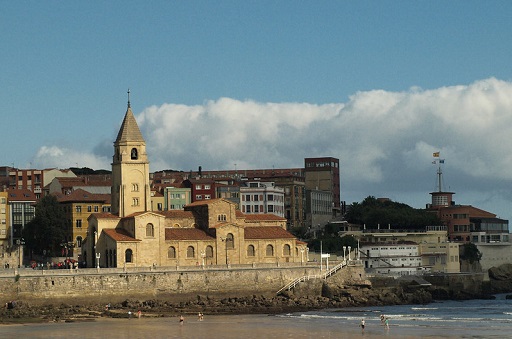
Barrio de Cimadevilla
It is the oldest neighborhood in Gijón, where the first Roman settlement took place. It is located on the walled hill of Santa Catalina and is an old fishermen's neighborhood where you can still feel the stoppage of time in its narrow streets..
Crossing its streets we cannot miss the facade of the Revillagigedo Palace, the Statue of Don Pelayo in the Plaza del Marqués or Plaza Mayor.
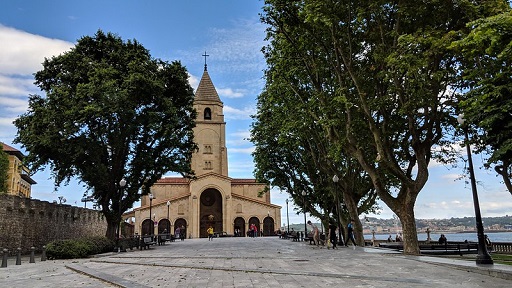
Church of Saint Peter the Apostle
built between 1945 y 1955 on the remains of the old 15th century church, burnt down at the beginning of the Spanish Civil War, we find the Church of San Pedro Apóstol. Originally Gothic, but currently in historicist style, inspired by the Asturian Romanesque and Pre-Romanesque.
For photography lovers, the capture of photos of the church from the promenade of the beach of San Lorenzo is spectacular.
Address: Church of San Pedro Apóstol of Gijón, Campo Valdes Transit, 1, 33201 Gijón, Asturias
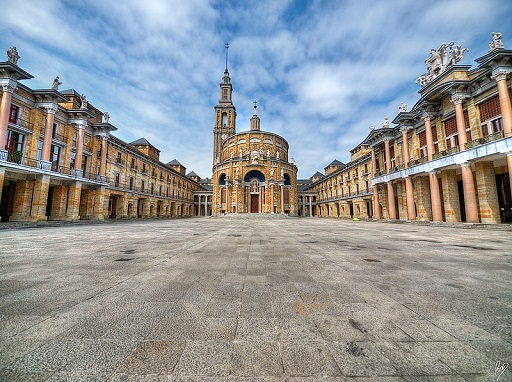
The Labor of Gijón
Surely if you ask about the largest building in Spain, the name of La Laboral comes out of more than one mouth, since it is the largest building in Spain today. It is located on the outskirts of Gijón and is a mandatory stop for travelers.
It is currently the City of Culture of Gijón, Although its origin dates back to 1948, with the idea of an orphanage for the children of deceased miners. in the Franco era, tried to become a university, although it was failed.
Inside is the Civic Square, the Corinthian Courtyard, the Great Central Square, The Theater Auditorium and Room of Paintings, The Torre de la Laboral and the Church.
For more information, Click here.
Address: Urb. of the environment of the Labor University (Gijon), 33204 Gijón, Asturias
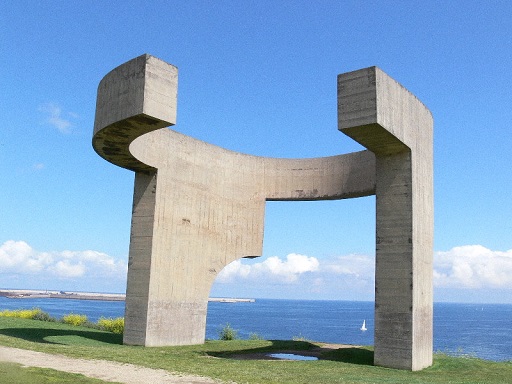
The Praise of the Horizon
Inaugurated in 1990 by Eduardo Chillida and that we found it in the Cerro de Santa Catalina, on the edge of a cliff.
The Elogio del Horizonte is the most favorite place to contemplate the Cantabrian, with beautiful views towards the sea, the port of San Lorenzo or the city.
Address: Praise of the Horizon, Santa Catalina Hill, cimavilla, 33201 Gijón, Asturias
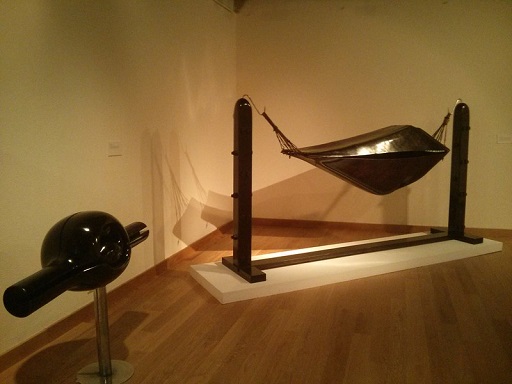
Jovellanos Birthplace Museum
The house of Gaspar Melchor de Jovellanos, one of the main exponents of the Spanish Enlightenment, It is located in a palace house built between the end of the 14th century and the beginning of the 16th century..
The building has undergone several reforms affecting its façade and internal layout until it, at the beginning of 1950, works began to adapt it to a museum.
Inside we will enter a tour of Asturian art from the 19th and 20th centuries and the works of some European artistic schools. Two rooms are dedicated to Jovellanos.
Address: Jovellanos Birthplace Museum, Jovellanos Square, s/n, 33201 Gijón, Asturias
Schedule:
From Tuesday to Friday: 9:30 – 14.00 y 17:00 – 19:30
Saturdays, Sundays and holidays: 10:00-14.00 y 17:00-19:30
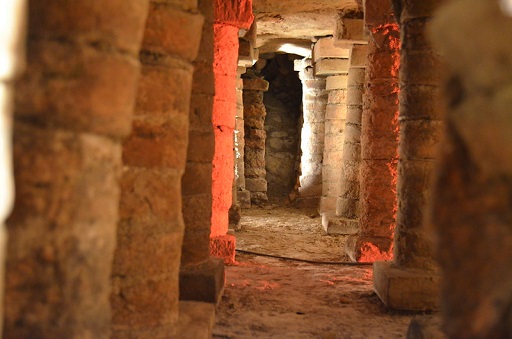
Campo Valdés Roman Baths Museum
It is located in Campo Valdés, next to the Church of San Pedro Apóstol. It is one of the vestiges of the Roman period. They are dated to the 1st century., and accidentally discovered in 1903 and hidden from the public until 1965.
It is considered one of the most important deposits in the North of Spain..
Address: Campo Valdés Roman Baths, Campo Valdes Transit, 1, 33201 Gijón, Asturias
Schedule:
From Tuesday to Sunday visits with prior reservation at 10:00 a.m., at 11:00 a.m., 12.00h, 13.00h, 17.00and 6:00 p.m. (Maximum 8 people every hour)
Reservations: 985 18 51 51
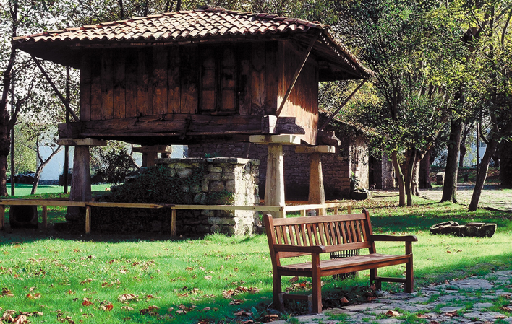
Museum of the Asturian People
It is located next to the El Molinón football stadium and was created in 1968. It has 30.000 square meters to which three buildings have been moved: the house of the Valdes, 17th century; the house of the González de la Vega family and the Asturias pavilion at the Universal Exposition in Seville.
The museum contains a large collection of ethnographic materials, graphic documents and an Asturian music library.
Address: Museum of the People of Asturias, Paseo Dr. Fleming, 877, 33203 Gijón, Asturias
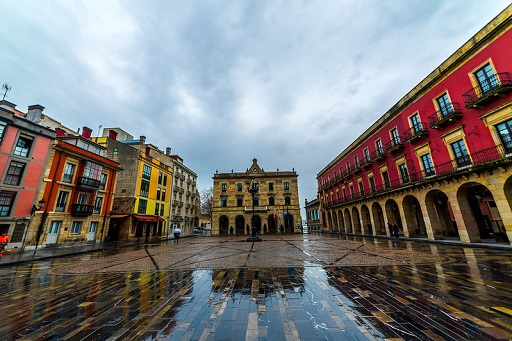
The main square of Gijón
One of the obligatory stops and where we also find the City Hall of Gijón. The Plaza Mayor was designed in 1852 and the town hall was completed in 1867.
With its rectangular and cobbled plan and porticoed on two of its sides, It is considered one of the most beautiful and spacious spaces in the city center.
Address: Main Square of Gijón, Main Square, 33201 Gijón, Asturias

The beach of San Lorenzo
It is located east of Cimadevilla. The most emblematic beach of Asturias is that of San Lorenzo. It is a beach of only one and a half kilometers and a promenade of almost three kilometers.
His design of the Escalerona tries to simulate an ocean liner, with the command bridge, the fireplace and the clock.
Address: San Lorenzo Beach, Promenade, Of. Rufo Garcia Rendueles, 33203 Gijón, Asturias
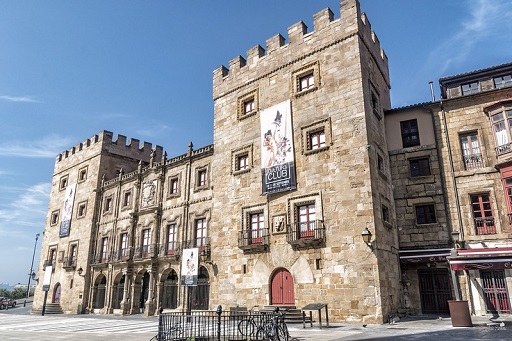
The Revillagigedo Palace and the Collegiate Church of San Juan Bautista
The Revillagigedo Palace is an important 18th century building declared an Asset of Cultural Interest. The building is in the Baroque style and its façade was completely rebuilt in 2004.
The Collegiate Church of San Juan Bautista is the chapel next to the Revillagigedo Palace and was completed 15 years later than the palace.
Address: Revillagigedo Palace, Marquis Square, 2, 33201 Gijón, Asturias
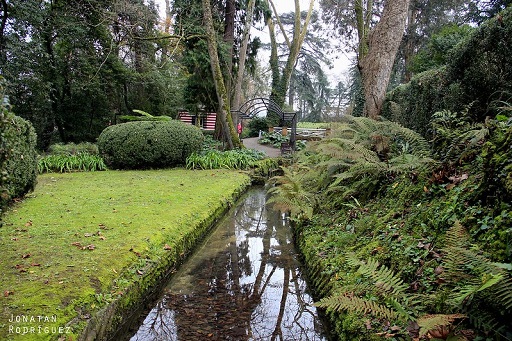
Atlantic Botanical Garden of Gijón
It is located next to La Laboral and has an area of 25 hectares. Its collections are organized in 4 thematic areas.
Vegetation lovers will find more than 30.000 plants of 2.500 different species. There are different explanatory supports for the interpretation of the contents in the tour, that make this botanical garden a unique and singular space.
What's more, offers an extensive program of guided tours and an extensive educational and recreational offer for all types of audiences.
Address: Atlantic Botanical Garden, Of. of the Botanical Garden, 2230, 33203 Gijón, Asturias
Schedule:
Of 10:00 a 15:30 hours
Of 16:00 a 21:00 hours

Campa Torres Natural Archaeological Park
It is located in Cape Torres, In this place there is a castro cilúrnigo dating from the 5th century BC., one of the oldest permanent settlements in the area.
In the park we find the passage from the pre-Roman to the Roman times and the origins of the city of Gijón, through which the Visigoths have passed, Muslims, romans and french. It is an opportunity for history lovers.
Address: Natural Archaeological Park of La Campa Torres, Ctra. towers field, 3834, 33299 Gijón, Asturias
Schedule:
from october to march:
10:00-17:00 mars to sunday.
From April to September:
10:30-19:00 mars to sunday.
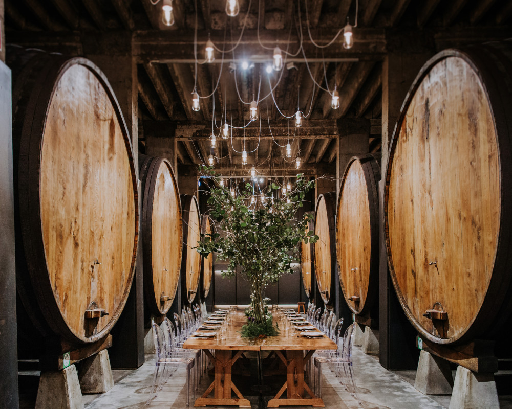
Lagar de Trabanco
This cider press is located in Lavandera, a place of mountains and apple trees 10 kilometers from Gijón. Founded in 1983, It is one of the most famous cider houses in Asturias.
If you are lovers of wine and wineries or cider, the visit to the Llagar de Trabanco must be more than mandatory.
Address: Trabanco House Restaurant, Carr. of washerwoman, 3255, 33350 Gijón, Asturias
For more information, pulse here

West Beach
Poniente beach is an artificial beach built in the mid-1950s. 90 that concentrates a great activity. It is located in the area of the marina where it previously housed old shipyards.
If you are starting out in water sports or just want to spend a day at the beach with the little ones, Poniente beach covers all the characteristics for it. What's more, It has a children's playground on the same sand.
Address: West Beach, Gijón